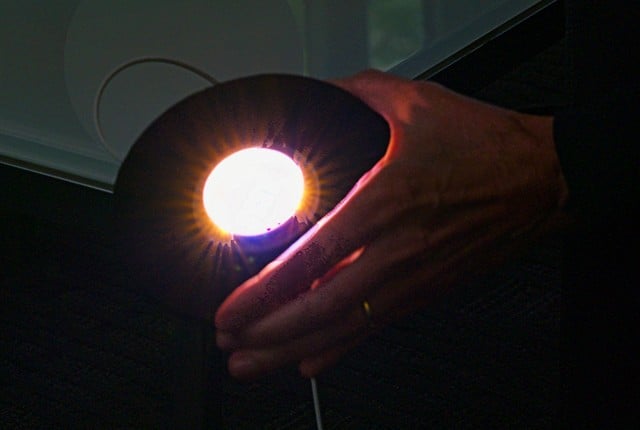Summary: A new study shows that an LED light alternating between blue and orange wavelengths is more effective at resetting circadian rhythms than traditional blue or white lights.
Estimated reading time: 5 minutes
Scientists at the University of Washington have developed a novel LED light that may revolutionize how we combat circadian rhythm disorders. The light, which alternates between blue and orange wavelengths 19 times per second, outperformed both blue and white light in advancing melatonin production in a small study of six participants.
Mimicking Nature’s Cues
The human body’s internal clock is primarily set by exposure to natural light. However, modern lifestyles often disrupt this natural synchronization, leading to a host of health and mood problems.
“Our internal clock tells us how our body’s supposed to act during different times of day, but the clock has to be set, and if our brain is not synced to the time of day, then it’s not going to work right,” explained Jay Neitz, a professor of ophthalmology at the UW School of Medicine and co-author of the study.
Most artificial lights designed to reset circadian rhythms focus on blue wavelengths, which stimulate melanopsin, a photopigment in the eyes sensitive to blue light. However, the new LED light takes a different approach.
“The light we developed does not involve the melanopsin photopigment,” Neitz said. “It has alternating blue and orange wavelengths that stimulate a blue-yellow opponent circuit that operates through the cone photoreceptors in the retina. This circuit is much more sensitive than melanopsin, and it is what our brains use to reset our internal clocks.”
Putting the Light to the Test
The study, led by James Kuchenbecker, a research assistant professor of ophthalmology, compared three different light sources:
- A white light of 500 lux (typical office brightness)
- A short-wavelength blue LED designed to trigger melanopsin
- The new blue-orange alternating LED
Participants were exposed to each light for two hours in the morning, with their melatonin levels measured through saliva samples before and after exposure. The results were striking:
- The new blue-orange LED advanced melatonin production by 1 hour and 20 minutes
- The blue light produced a 40-minute advance
- The white light resulted in just a 2.8-minute advance
Implications for Health and Well-being
These findings could have significant implications for treating seasonal affective disorder (SAD), jet lag, and other circadian rhythm disorders. By more effectively resetting the body’s internal clock, this new light technology could help improve sleep quality, mood, and overall health for many people struggling with disrupted circadian rhythms.
“Even though our light looks like white to the naked eye, we think your brain recognizes the alternating blue and orange wavelengths as the colors in the sky,” Neitz explained. “The circuit that produced the biggest shift in melatonin wants to see orange and blue.”
While the study was small, with only six participants, the results are promising and warrant further research. As we continue to understand the intricate relationship between light exposure and our internal clocks, technologies like this could play a crucial role in improving public health in our increasingly artificial light environments.
Quiz:
- How many times per second does the new LED light alternate between blue and orange wavelengths?
- By how much did the new blue-orange LED advance melatonin production in the study?
- What photopigment in the eyes is most sensitive to blue light?
Answers:
- 19 times per second
- 1 hour and 20 minutes
- Melanopsin
Further Reading:
- National Institute of General Medical Sciences: Circadian Rhythms
- Sleep Foundation: Light and Sleep
- Harvard Health Publishing: Blue light has a dark side
Glossary of Terms:
- Circadian Rhythms: The body’s internal 24-hour cycle of biological processes.
- Melatonin: A hormone that helps regulate sleep-wake cycles.
- Photopigment: Light-sensitive molecules found in the retina of the eye.
- Melanopsin: A photopigment particularly sensitive to blue light.
- LED: Light-Emitting Diode, a semiconductor device that emits light when an electric current passes through it.
- Lux: A unit of measurement for light intensity as perceived by the human eye.
Enjoy this story? Get our newsletter! https://scienceblog.substack.com/
If our reporting has informed or inspired you, please consider making a donation. Every contribution, no matter the size, empowers us to continue delivering accurate, engaging, and trustworthy science and medical news. Independent journalism requires time, effort, and resources—your support ensures we can keep uncovering the stories that matter most to you.
Join us in making knowledge accessible and impactful. Thank you for standing with us!

